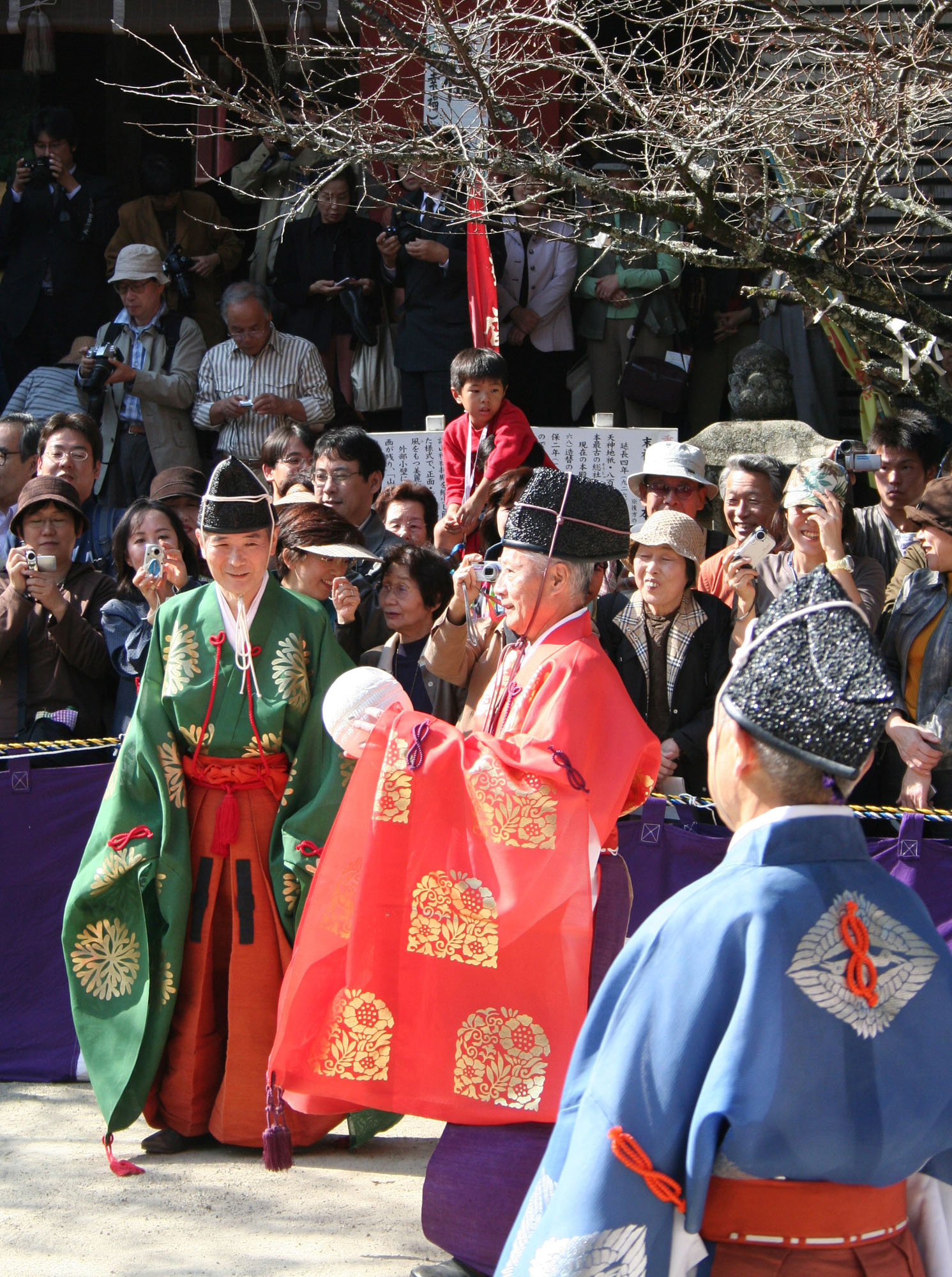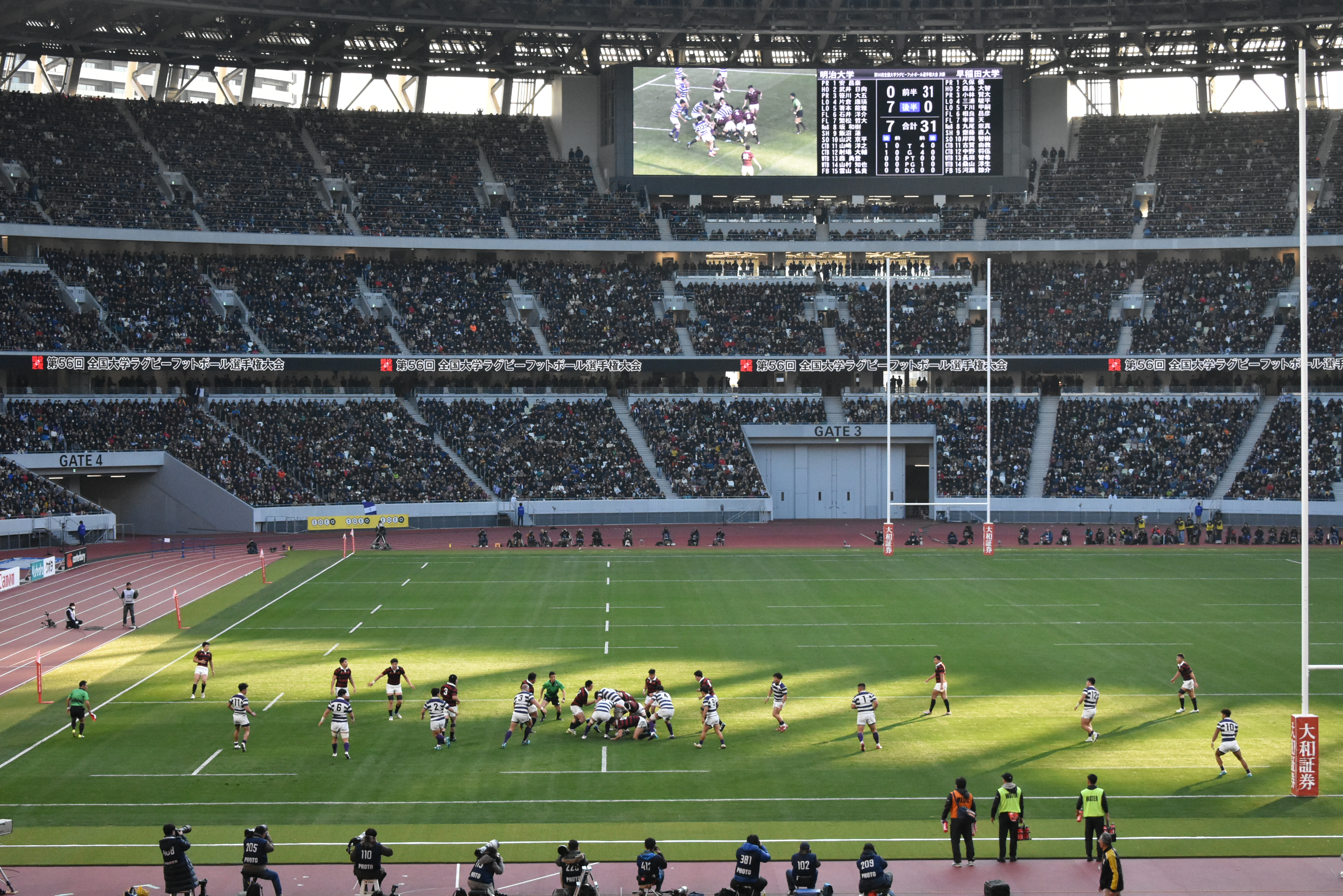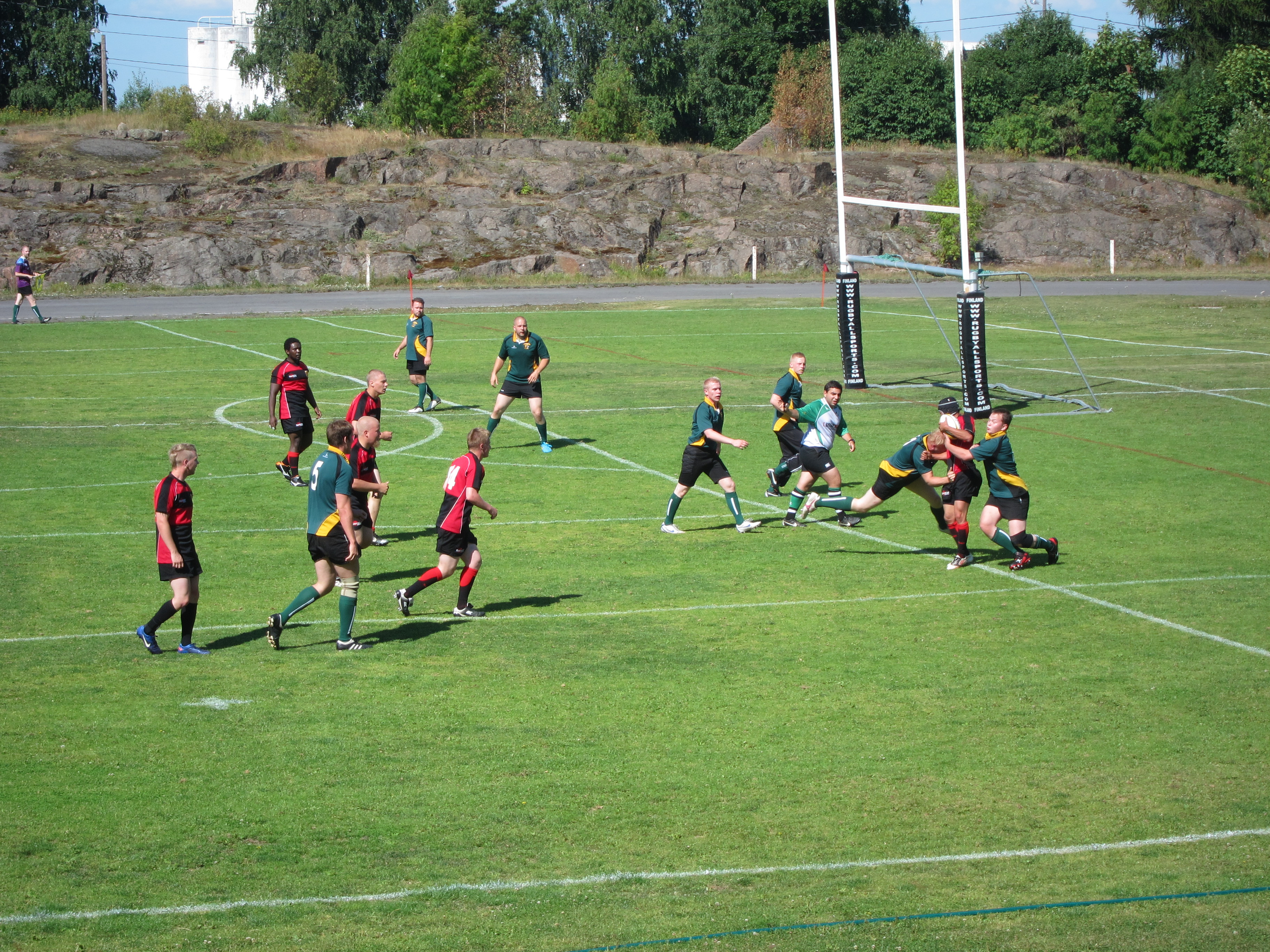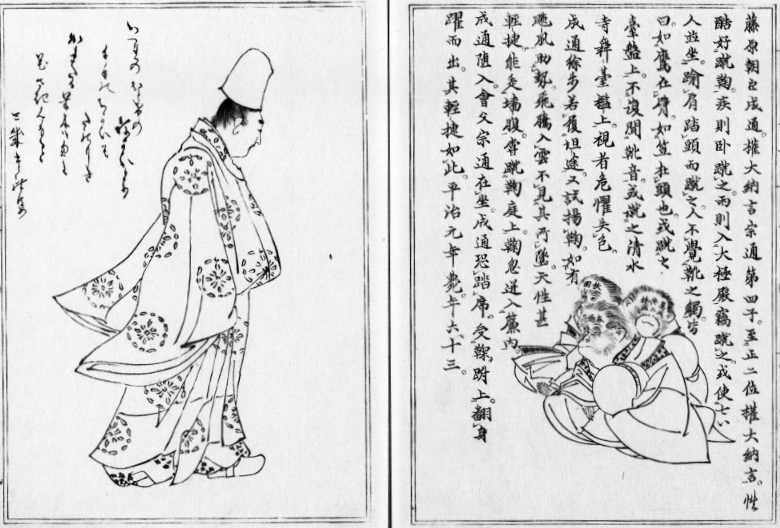|
Rugby Union In Japan
Rugby union in Japan is a moderately popular sport. Japan has the fourth largest population of rugby union players in the world and the sport has been played there for over a century. There are 125,000 Japanese rugby players, 3,631 official rugby clubs, and the Japan national team is ranked 10th in the world. History Before the arrival of rugby, Japan was home to a game known as ''kemari'' ( ja, 蹴鞠), which in some ways was a parallel development to association football, and to a lesser extent rugby football. It is said that ''kemari'' was introduced to Japan from China in about 600 AD, during the Asuka period, and was based upon the Chinese sport of cuju. The object of Kemari is to keep one ball in the air, with all players cooperating to do so. The ball, known as a ''mari'', is made of deerskin with the hair facing inside and the hide on the outside. Kemari has been revived in modern times, and the players still wear the traditional costumes for the game. Early history Lik ... [...More Info...] [...Related Items...] OR: [Wikipedia] [Google] [Baidu] |
Chichibunomiya Rugby Stadium
(also called Prince Chichibu Memorial Stadium) is a rugby union stadium located in the Aoyama district of central Tokyo, Japan. It is the spiritual home of Japanese rugby union and the headquarters of the Japan Rugby Football Union. Named for Prince Chichibu, the late brother of Emperor Hirohito, the venue is used mostly for rugby sevens and rugby union matches. Redevelopment plans call for the stadium and the adjacent Meiji Jingu Stadium, used for baseball, to be demolished and replaced with new facilities. Facilities The stadium currently can accommodate 27,188 spectators, but only part of the stands are covered. A large electronic scoreboard was added to the grounds as a step toward modernization before the fifth Rugby World Cup in 2003. On April 19, 2007, it was announced that the stadium was to be equipped with lights for night games by the end of July, to assist with the RWC 2015 bid. The first rugby game under lights was Japan v Asian Barbarians in August 2007, the sen ... [...More Info...] [...Related Items...] OR: [Wikipedia] [Google] [Baidu] |
All-Japan University Rugby Championship
The All-Japan University Rugby Football Championships (全国大学ラグビーフットボール選手権大会 – ''Zenkoku Daigaku Ragubi- Futtobo-ru Senshuken Taikai'') have been held annually since 1964 to determine the top University Rugby team. In 1964 only 4 teams competed. From 1965 to 1992 there were 8 teams and finally expanding to 16 teams from 1993 onwards. Qualifying 1964 * Kanto Taiko League – Top 2 teams * Kansai League – Top 2 teams 1965–1992 * Kanto Taiko League and Kanto League – Top 4 teams * Kansai League – Top 2 teams * Kyushuu League – Winner Then there is a 3rd place in the Kansai League which is decided in a playoff between the 3rd place Kansai League team and the top Tokai League team. 1993–present * Kanto Taiko League – Top 4 finishers * Kanto League – Top 5 finishers * Kansai League – Top 4 finishers * Kyushuu League – Winner Then there is a 5th place in the Kanto Taiko League and the Kansai League which i ... [...More Info...] [...Related Items...] OR: [Wikipedia] [Google] [Baidu] |
Gunboat Diplomacy
In international politics, the term gunboat diplomacy refers to the pursuit of foreign policy objectives with the aid of conspicuous displays of naval power, implying or constituting a direct threat of warfare should terms not be agreeable to the superior force. Etymology The term "gunboat diplomacy" comes from the nineteenth-century period of imperialism, when Western powersfrom Europe and the United Stateswould intimidate other, less powerful entities into granting concessions through a demonstration of Western superior military capabilities, usually represented by their naval assets. A coastal country negotiating with a Western power would notice that a warship or fleet of ships had appeared off its coast. The mere sight of such power almost always had a considerable effect, and it was rarely necessary for such boats to use other measures, such as demonstrations of firepower. A notable example of gunboat diplomacy, the Don Pacifico affair in 1850, saw the British Foreig ... [...More Info...] [...Related Items...] OR: [Wikipedia] [Google] [Baidu] |
Rugby League In Japan
Rugby may refer to: Sport * Rugby football in many forms: ** Rugby league: 13 players per side *** Masters Rugby League *** Mod league *** Rugby league nines *** Rugby league sevens *** Touch (sport) *** Wheelchair rugby league ** Rugby union: 15 players per side *** American flag rugby *** Beach rugby *** Mini rugby *** Rugby sevens, 7 players per side *** Rugby tens, 10 players per side *** Snow rugby *** Touch rugby *** Tambo rugby ** Both codes *** Tag rugby *Rugby Fives, a handball game, similar to squash, played in an enclosed court *Underwater rugby, an underwater sport played in a swimming pool and named after rugby football *Rugby ball, a ball for use in rugby football Arts and entertainment * '' Rugby'' (video game), the 2000 installment of Electronic Arts' Rugby video game series * ''Rugby'', second movement of ''Mouvements symphoniques'' by Arthur Honegger Brands and enterprises * Rugby (automobile), made by Durant Motors * Rugby Cement, a former UK PLC, now a su ... [...More Info...] [...Related Items...] OR: [Wikipedia] [Google] [Baidu] |
Rugby League
Rugby league football, commonly known as just rugby league and sometimes football, footy, rugby or league, is a full-contact sport played by two teams of thirteen players on a rectangular field measuring 68 metres (75 yards) wide and 112–122 metres (122 to 133 yards) long with H shaped posts at both ends. It is one of the two codes of rugby football, the other being rugby union. It originated in 1895 in Huddersfield, Yorkshire as the result of a split from the Rugby Football Union over the issue of payments to players.Tony Collins, ''Rugby League in Twentieth Century Britain'' (2006), p.3 The rules of the game governed by the new Northern Rugby Football Union progressively changed from those of the RFU with the specific aim of producing a faster and more entertaining game to appeal to spectators, on whose income the new organisation and its members depended. Due to its high-velocity contact, cardio-based endurance and minimal use of body protection, rugby league i ... [...More Info...] [...Related Items...] OR: [Wikipedia] [Google] [Baidu] |
Ball
A ball is a round object (usually spherical, but can sometimes be ovoid) with several uses. It is used in ball games, where the play of the game follows the state of the ball as it is hit, kicked or thrown by players. Balls can also be used for simpler activities, such as catch or juggling. Balls made from hard-wearing materials are used in engineering applications to provide very low friction bearings, known as ball bearings. Black-powder weapons use stone and metal balls as projectiles. Although many types of balls are today made from rubber, this form was unknown outside the Americas until after the voyages of Columbus. The Spanish were the first Europeans to see the bouncing rubber balls (although solid and not inflated) which were employed most notably in the Mesoamerican ballgame. Balls used in various sports in other parts of the world prior to Columbus were made from other materials such as animal bladders or skins, stuffed with various materials. As balls are one o ... [...More Info...] [...Related Items...] OR: [Wikipedia] [Google] [Baidu] |
Cuju
''Cuju'' or ''Ts'u-chü'' (蹴鞠) is an ancient Chinese football game. Cuju is the earliest known recorded game of football. It is a competitive game that involves kicking a ball through an opening into a net without the use of hands. Descriptions of the game date back to the Han dynasty, a Chinese military work from the 3rd–2nd century BC describes it as an exercise. It was also played in other Asian countries like Korea, Japan and Vietnam. History The first mention of ''Cuju'' in a historical text is in the Warring States era ''Zhan Guo Ce'', in the section describing the state of Qi. It is also described in Sima Qian's ''Records of the Grand Historian'' (under the Biography of Su Qin), written during the Han Dynasty.Riordan (1999), 32. A competitive form of ''cuju'' was used as fitness training for military cavaliers, while other forms were played for entertainment in wealthy cities like Linzi. During the Han Dynasty (206 BC – AD 220), the popularity of ''cuju'' sprea ... [...More Info...] [...Related Items...] OR: [Wikipedia] [Google] [Baidu] |
Asuka Period
The was a period in the history of Japan lasting from 538 to 710 (or 592 to 645), although its beginning could be said to overlap with the preceding Kofun period. The Yamato polity evolved greatly during the Asuka period, which is named after the Asuka region, about south of the modern city of Nara. The Asuka period is characterized by its significant artistic, social, and political transformations, having their origins in the late Kofun period. The introduction of Buddhism marked a change in Japanese society. The Asuka period is also distinguished by the change in the name of the country from to . Naming The term "Asuka period" was first used to describe a period in the history of Japanese fine-arts and architecture. It was proposed by fine-arts scholars and Okakura Kakuzō around 1900. Sekino dated the Asuka period as ending with the Taika Reform of 646. Okakura, however, saw it as ending with the transfer of the capital to the Heijō Palace of Nara. Although historians ge ... [...More Info...] [...Related Items...] OR: [Wikipedia] [Google] [Baidu] |
Rugby Football
Rugby football is the collective name for the team sports of rugby union and rugby league. Canadian football and, to a lesser extent, American football were once considered forms of rugby football, but are seldom now referred to as such. The governing body of Canadian football, Football Canada, was known as the Canadian Rugby Union as late as 1967, more than fifty years after the sport parted ways with rugby rules. Rugby football started about 1845 at Rugby School in Rugby, Warwickshire, England, although forms of football in which the ball was carried and tossed date to the Middle Ages (see medieval football). Rugby football spread to other Public school (United Kingdom), English public schools in the 19th century and across the British Empire as former pupils continued to play it. Rugby football split into two codes in 1895, when twenty-one clubs from the North of England left the Rugby Football Union to form the Rugby Football League, Northern Rugby Football Union (renamed ... [...More Info...] [...Related Items...] OR: [Wikipedia] [Google] [Baidu] |
Association Football
Association football, more commonly known as football or soccer, is a team sport played between two teams of 11 players who primarily use their feet to propel the ball around a rectangular field called a pitch. The objective of the game is to score more goals than the opposition by moving the ball beyond the goal line into a rectangular framed goal defended by the opposing side. Traditionally, the game has been played over two 45 minute halves, for a total match time of 90 minutes. With an estimated 250 million players active in over 200 countries, it is considered the world's most popular sport. The game of association football is played in accordance with the Laws of the Game, a set of rules that has been in effect since 1863 with the International Football Association Board (IFAB) maintaining them since 1886. The game is played with a football that is in circumference. The two teams compete to get the ball into the other team's goal (between the posts and under t ... [...More Info...] [...Related Items...] OR: [Wikipedia] [Google] [Baidu] |
Kemari
is an athletic game that was popular in Japan during the Heian (794–1185) and Kamakura period (1185–1333). It resembles a game of football or hacky sack. The game was popular in Kyoto, the capital, and the surrounding Kinki (Kansai region), and over time it spread from the aristocracy to the samurai class and '' chōnin'' class. Nowadays, ''kemari'' is played as a seasonal event mainly at Shinto shrines in the Kansai region, and players play in a costume called ''kariginu'' ( :ja:狩衣), which was worn as everyday clothing by court nobles during the Heian period. History The earliest ''kemari'' was created under the influence of the Chinese sport '' Cuju'', which has the same kanji. It is often said that the earliest evidence of ''kemari'' is the record of 644 CE in the '' Nihon Shoki'', but this theory is disputed. In 644, Prince Naka-no-Ōe and Nakatomi no Kamatari, who later initiated the Taika Reforms, became friends during a ball game described as "打鞠", but ... [...More Info...] [...Related Items...] OR: [Wikipedia] [Google] [Baidu] |
Kemari Matsuri At Tanzan Shrine 1
is an athletic game that was popular in Japan during the Heian (794–1185) and Kamakura period (1185–1333). It resembles a game of football or hacky sack. The game was popular in Kyoto, the capital, and the surrounding Kinki (Kansai region), and over time it spread from the aristocracy to the samurai class and ''chōnin'' class. Nowadays, ''kemari'' is played as a seasonal event mainly at Shinto shrines in the Kansai region, and players play in a costume called ''kariginu'' ( :ja:狩衣), which was worn as everyday clothing by court nobles during the Heian period. History The earliest ''kemari'' was created under the influence of the Chinese sport ''Cuju'', which has the same kanji. It is often said that the earliest evidence of ''kemari'' is the record of 644 CE in the '' Nihon Shoki'', but this theory is disputed. In 644, Prince Naka-no-Ōe and Nakatomi no Kamatari, who later initiated the Taika Reforms, became friends during a ball game described as "打鞠", but it m ... [...More Info...] [...Related Items...] OR: [Wikipedia] [Google] [Baidu] |


.jpg)






